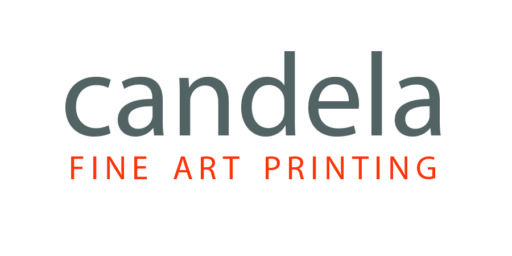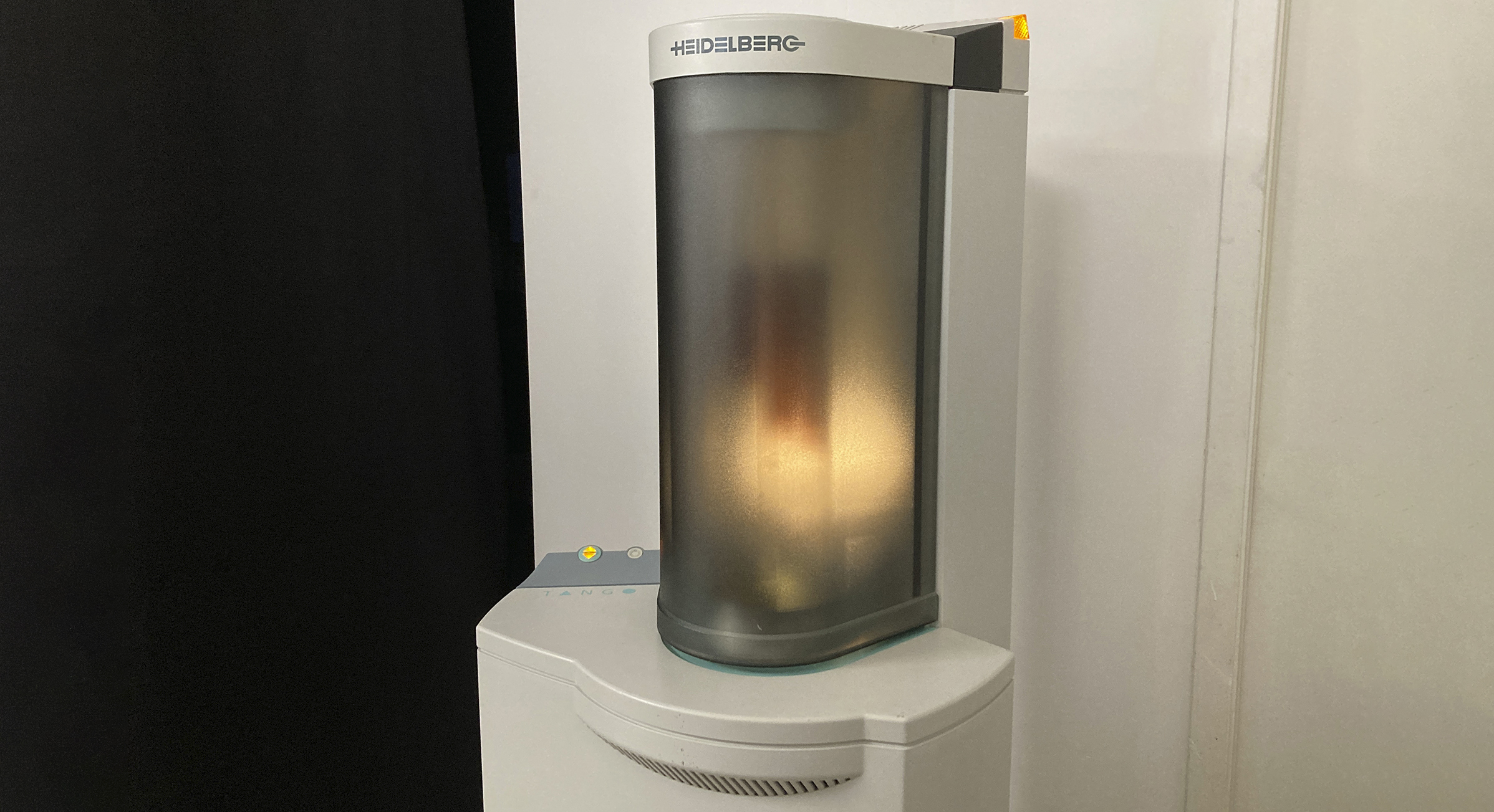1035 22nd Avenue Unit 18 Oakland, CA 94606
- Call: 510-227-8334
PRINTING:
We have two ways you can order prints. For most orders, use our Upload and Order tool to submit your print-ready files for printing.
To start a custom print order (or need to upload files larger than 100mb) use our Manual Order form.
SCANNING ART:
For Artwork Captures please book a dropoff appointment.
SCANNING FILM:
Drum scanning film? Order here.
OTHER SERVICES:
Something else? Call or email us, or get in touch with our contact form here.


Drum scanning is the finest quality, highest resolution method available to scan your transparencies and negative film. We use the best two drum scanners available – the Heidelberg Tango and the Aztek HiResolve 8000. Each drum scan is performed on a custom basis to retain your film’s delicate highlights, deep shadow details, smooth gradients, and excellent grain rendition. These scans are the best possible starting points for fine art prints. Scans are available up to 11,000 dpi for 35mm film, and 8000dpi for all formats up to 8″ x 10″ film.
We’ve scanned many types of film, from 126mm all the way up to 11″ x 14″ sheet film.
![]()
![]()
![]()
![]()
| Scan Size | Resolution | File Size | Max Print Size | 1 scan | 2-10 scans | 11-25 scans | 26-50 scans |
|---|---|---|---|---|---|---|---|
| small | 4000dpi | 125 MB | 13" x 20" | $35.00 | $32.55 | $29.75 | $28.00 |
| medium | 8000dpi | 500 MB | 26" x 38" | $50.00 | $46.50 | $42.50 | $40.00 |
| large | 11000dpi | 1 GB | 35" x 50" | $100.00 | $93.00 | $85.00 | $80.00 |
| Scan Size | Resolution | File Size | Max Print Size | 1 scan | 2-10 scans | 11-25 scans | 26-50 scans |
|---|---|---|---|---|---|---|---|
| small | 4000dpi | 375-600 MB | 30 x 30" | $50.00 | $46.50 | $42.50 | $40.00 |
| large | 8000dpi | 1 GB | 60" x 60" | $100.00 | $93.00 | $85.00 | $80.00 |
| Scan Size | Resolution | File Size | Max Print Size | 1 scan | 2-10 scans | 11-25 scans | 26-50 scans |
|---|---|---|---|---|---|---|---|
| small | 4000dpi | 600 - 750 MB | 40" x 48" | $65.00 | $60.45 | $55.25 | $52.00 |
| large | 8000dpi | 2.3 - 3 GB | 60" x 70" | $130.00 | $120.90 | $110.50 | $104.00 |
| Scan Size | resolution | File Size | Max Print Size | 1 scan | 2-10 scans | 11-25 scans | 26-50 scans |
|---|---|---|---|---|---|---|---|
| small | 2000dpi | 350 MB | 21" x 60" | $75.00 | $69.75 | $63.75 | $60.00 |
| large | 4000dpi | 1.5 GB | 31" x 90" | $145.00 | $134.85 | $123.25 | $116.00 |
| Scan Size | Resolution | File Size | Max Print Size | 1 scan | 2-10 scans | 11-25 scans | 26-50 scans |
|---|---|---|---|---|---|---|---|
| small | 2000dpi | 450 MB | 26" x 32" | $75.00 | $69.75 | $63.75 | $60.00 |
| medium | 3200dpi | 1.1 GB | 42" x 53" | $100.00 | $90.00 | $80.00 | $75.00 |
| large | 4000dpi | 1.8 GB | 52" x 65" | $125.00 | $116.25 | $106.25 | $100.00 |
| Scan Size | Resolution | File Size | Max Print Size | 1 scan | 2-10 scans | 11-25 scans | 26-50 scans |
|---|---|---|---|---|---|---|---|
| small | 1200dpi | 700 mb | 30" x 40" | $75.00 | $71.25 | $67.50 | $64.50 |
| large | 2000dpi | 1.8 GB | 52" x 65" | $125.00 | $116.25 | $106.25 | $100.00 |
| Scan Size | Resolution | File Size | Max Print Size | 1 scan | 2-10 scans | 11-25 scans | 26-50 scans |
|---|---|---|---|---|---|---|---|
| small | 1200dpi | 700 mb | 30" x 40" | $75.00 | $71.25 | $67.50 | Contact for Quote |
| large | 2000dpi | 1.8 GB | 52" x 65" | $125.00 | $116.25 | $106.25 | Contact for Quote |
| extra large | 2666 dpi | 3.2 GB | 72" x 90" | $200.00 | $190.00 | $180.00 | Contact for Quote |
| Scan Size | resolution | File Size | Max Print Size | 1 scan | 2-10 scans | 11-25 scans | 26-50 scans |
|---|---|---|---|---|---|---|---|
| small | 2000dpi | 350 MB | 21" x 60" | $75.00 | $69.75 | $63.75 | $60.00 |
| large | 4000dpi | 1.5 GB | 31" x 90" | $145.00 | $134.85 | $123.25 | $116.00 |
A drum scanner is the best scanner for capturing the dynamic range, tonal quality, detail, and sharpness of negative and transparency film. These professional machines, like our Heidelberg Tango drum scanner, have the ability to make exact reproductions. Our Tango drum scanner weighs 550 pounds and stands five feet tall, while our Aztek (the smaller scanner) weighs 140 pounds.
Your film is fluid-mounted to an acrylic cylinder (the drum) and sandwiched between optically clear Mylar. The fluid mounting increases highlight and shadow detail in your scans. It improves fine detail while removing much of the dust & scratches, emulsion blemishes, etc) in your film, and reduces film grain. There’s no way to simulate the improvements fluid mounting your film offers – you can only fluid mount film with drum scanners and some flatbeds, not with an Imacon or Noritsu scanner. The end result is drum scans that are cleaner and sharper, without feeling like the scans have been sharpened with a filter. This process is especially beneficial for areas of the film that require enhanced detail.
After mounting, the drum is loaded into the scanner, where it spins at high RPM as the scan head (also called the “periscope”) travels up and down in a series of extremely precise micro-steps, slowly yet faithfully recording the film’s details line by line. A medium format negative may take up to 2 hours of scanning time.
The prices listed are for raw base scans. A raw scan is not a print-ready file (i.e a file that has been cleaned of dust/scratches, retouched and edited for print on a specific paper). Order a raw scan if you’d like a high resolution drum scan to edit yourself for printing.
Additional scan cleanup/dust-busting, or editing (also called mastering) to prepare images for printing is charged at our normal hourly rate in 1/4 hour increments. Contact the studio for a quote.
Excellent question! We are lucky to have two drum scanners in our studio. We prefer the Heidelberg Tango for transparencies and most negative scans. The detail it pulls from highlights and shadows is clean and effortless, and the grain is beautiful.
Our Aztek HR8000 allows us to scan large format film at a higher resolution, but that doesn’t always translate into meaningful improvements in your prints. Aztek’s software can sometimes help with extremely thin negatives.
We’re always happy to suggest which scanner is best for your particular project.
Brad (Candela’s owner, guy who does almost all of the drum scanning) has been operating drum scanners since 2005 and has owned or operated Heidelberg Tangos, Primescans, S3900, Imacon Flextights, Nikon Coolscans, Epson flatbed scanners, and Aztek HR8000s.
Brad was trained in drum scanning by Bob Cornelis of Color Folio, and has drum scanned film for clients all around the world, including Richard Misrach, Todd Hido, Roger Minick, Debra Bloomfield, and many more!
If you have copy art (slides taken of your artworks), order drum scans to start the printing process. If you have existing artwork (paintings, drawings, maps, etc) that you want digitized, please use our artwork scanning service.
| Scan Size | resolution | File Size | Max Print Size | 1 scan | 2-10 scans | 11-25 scans | 26-50 scans |
|---|---|---|---|---|---|---|---|
| small | 2000dpi | 350 MB | 21" x 60" | $75.00 | $69.75 | $63.75 | $60.00 |
| large | 4000dpi | 1.5 GB | 31" x 90" | $145.00 | $134.85 | $123.25 | $116.00 |